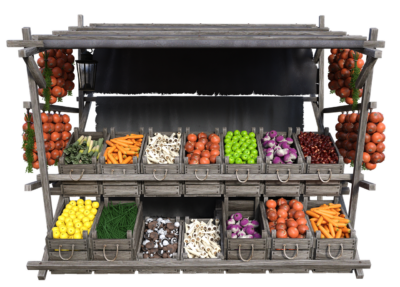Exploring Self-Sufficiency
In this Article...
What does it mean and why does it matter?
In today’s fast-paced world, the concept of self-sufficiency has gained significant attention as people seek ways to become more independent and less reliant on external systems. But what does self-sufficiency truly entail, and why is it such a compelling goal for many? In this blog, we’ll delve into the meaning of self-sufficiency, its historical context, and its relevance in the modern world.
What Is Self-Sufficiency?
At its core, self-sufficiency is the ability to meet one’s own needs without relying heavily on external sources or assistance. It involves being self-reliant in various aspects of life, including food, shelter, energy, and even emotional well-being. Self-sufficiency encompasses a wide range of skills, knowledge, and practices aimed at reducing dependence on external systems and fostering a sense of empowerment and autonomy.
Where has it come from?
Self-sufficiency is not a new concept; it has roots in human history dating back to our ancestors. In earlier societies, individuals and families had to rely on their own skills and resources to survive. Hunting, gathering, farming, and crafting were essential skills for obtaining food, shelter, and clothing. Self-sufficiency was not merely a lifestyle choice but a necessity for survival.
The Industrial Revolution marked a significant shift away from self-sufficiency as mechanisation and mass production made it more convenient to purchase goods and services. With the rise of cities and modern urban living, many people became increasingly reliant on external systems for their daily needs.
However, in recent decades, there has been a resurgence of interest in self-sufficiency as people seek to regain control over their lives, and prepare for uncertain times.
What is the modern meaning of Self-Sufficiency?
In the modern context, self-sufficiency encompasses a range of practices and principles:
Food Self-Sufficiency: Growing your own food through gardening or farming is a common aspect of self-sufficiency. This not only provides fresh and organic produce but also reduces reliance on industrial agriculture.
Energy Independence: Self-sufficiency often involves generating your own energy, such as through solar panels, wind turbines, or off-grid living. This can reduce dependence on centralised power grids.
Financial Independence: Achieving financial self-sufficiency means having the means to support your lifestyle without being tied to a traditional job or relying heavily on external income sources.
DIY Skills: Learning practical skills like carpentry, plumbing, sewing, and home repairs empowers individuals to take care of their own needs, reducing dependence on specialised professionals.
Emotional Self-Sufficiency: This aspect involves developing emotional resilience, coping mechanisms, and self-awareness to navigate life’s challenges independently.
Why does Self-Sufficiency matter?
Self-sufficiency enhances personal and community resilience. Being able to meet basic needs during unexpected events like natural disasters or economic crises can be invaluable. Also by producing your own goods or services, you can save money in the long run. For example, growing your own vegetables can cut shopping bills, and generating your own energy can reduce utility costs. Furthermore, self-sufficiency fosters a sense of empowerment and self-reliance. It allows individuals to take control of their lives and make decisions that align with their values. Plus, self-sufficiency can provide greater lifestyle flexibility. It may allow individuals to live in rural areas, travel more freely, or pursue alternative career paths.
How can I pursue Self-Sufficiency?
Assess Your Goals: Start by identifying your goals for self-sufficiency. What aspects of your life do you want to become more self-reliant in? It could be food, energy, finances, or skills.
Learn and Acquire Skills: Invest time in learning essential skills. Take classes, read books, and seek guidance from experts. Practical skills like gardening, canning, or woodworking are valuable.
Plan and Set Priorities: Create a plan that outlines your priorities and steps to achieve self-sufficiency. Be realistic about what you can accomplish and consider gradual, incremental changes.
Build a Support Network: Connect with like-minded individuals and communities who share your interest in self-sufficiency. They can provide guidance, support, and a sense of community.
Start Small: Begin with manageable projects. If you’re new to gardening, for instance, start with a small vegetable plot. As you gain confidence, you can expand your efforts.
Evaluate and Adapt: Periodically assess your progress and make adjustments as needed. Self-sufficiency is a journey, and your goals may evolve over time.
Self-sufficiency is a timeless concept that has found renewed relevance in the modern world. It involves the pursuit of greater independence and self-reliance in various aspects of life, from food and energy to finances and emotional well-being. While complete self-sufficiency may not be attainable or desirable for everyone, the principles of self-sufficiency can empower individuals to lead more resilient, and fulfilling lives. By learning practical skills, setting clear goals, and embracing a sense of autonomy, individuals can make meaningful strides toward greater self-sufficiency and, in turn, a deeper connection to their own lives and the world around them.



